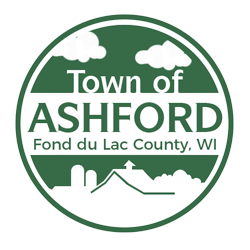Community and Natural Resource Community Development – Part of
Cooperative Extension, UW-Extension
http://www.uwex.edu/ces/cnred/
Contact Mark Rickenbach, 608-262-0134, [email protected]
A long-established state program that gives private landowners a
property tax break for
managing their land sustainably is getting a closer look.
The Managed Forest Law (MFL) was introduced in 1985 as an incentive
for private landowners with both small and large forest tracts to
manage their land for the benefit of the public, the environment and
the state’s timber industry. Now there is concern that the tax breaks
might be affecting some communities’ bottom lines.
To test that idea, researchers from the University of
Wisconsin-Extension and UWMadison
conducted a study that looked at how hypothetical changes in MFL
enrollments affected town purpose property tax revenues.
“The state’s cap on shared revenues going back to 2004 is driving
interest in looking at the impact of the MFL and other incentive
programs on property taxes,” says Mark Rickenbach, private forest
policy specialist with the UW-Extension and one of the study’s
authors. “Until then, shared revenues for counties and municipalities
essentially covered any decrease in revenue that local governments
might have had from enrollment in the MFL.”
Rickenbach and his colleague studied tax information from more than
1,200 Wisconsin
towns to see how the mill rate—the dollars needed for town governments
to function divided by the tax base—might be affected by enrollments
in the MFL.
“On average, the mill rate change for a hypothetical 20 percent
increase in MFL
enrollment was +0.019 mills—or $1.90 per $100,000 of assessed land
value,” says Rickenbach. “There also appears to be overlapping impacts
with other property tax incentives like Agricultural-Forest
valuation.”
“Our findings indicate that changing MFL enrollments are related to
mill rate change, but
for most towns the change is relatively small. Its presence now, but
not in the past,
reflects the capping of state aids to counties and municipalities,”
Rickenbach notes.
Though the impacts are relatively small, they will add up over time.
“Solutions for this
might blend different approaches or entail more comprehensive property
tax reform,” Rickenbach adds.
Wisconsin has more than 16 million acres of forested land, with over
half in relatively
small tracts belonging to private woodland owners. However, forestland
makes up only a
small portion (less than two and one half percent) of Wisconsin’s
property tax base.
“The Managed Forest Law has done lots of good things,” says
Rickenbach. “It helps woodland owners better manage their land. It’s
good for the communities that depend on timber and recreation, and for
land protection. But it and other property tax incentives do come with
a cost.”
To see the full results of the study, go to
http:fwe.wisc.edu/extension/GWQ52.pdf or call
the DNR Division of Forestry at 608-267-7494 to request a copy. The
project was funded
by the USDA Cooperative State Research, Education and Extension
Service and the Wisconsin Department of Natural Resources-Division of
Forestry.
